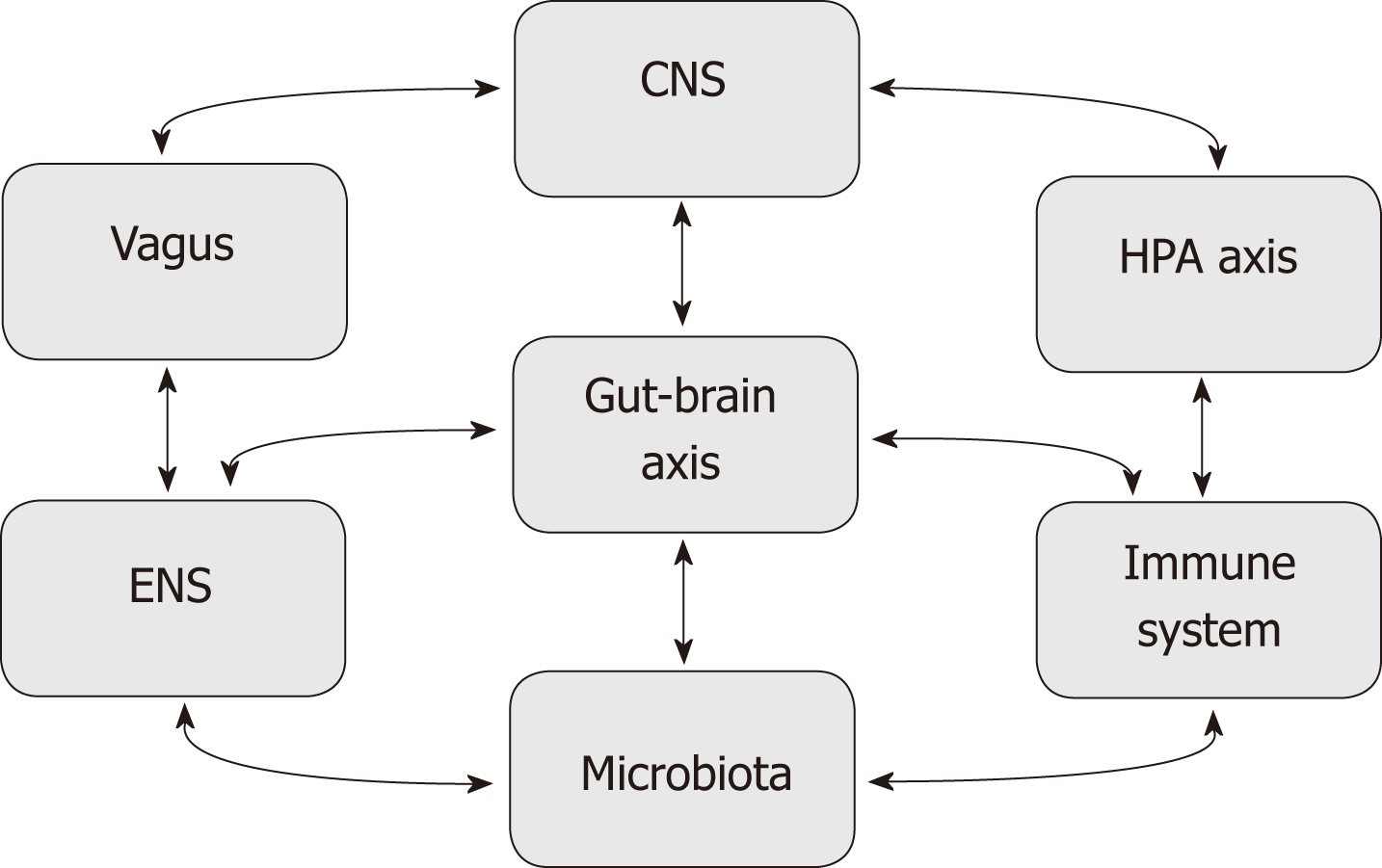Copyright
©The Author(s) 2019.
World J Gastroenterol. Feb 7, 2019; 25(5): 552-566
Published online Feb 7, 2019. doi: 10.3748/wjg.v25.i5.552
Published online Feb 7, 2019. doi: 10.3748/wjg.v25.i5.552
Figure 1 The biopsychosocial model for functional gastrointestinal disorder.
The figure illustrates the interaction of psychosocial factors, environmental factors and disturbances in gut-brain axis with functional GI disorders. Early life stress events combined with psychosocial state of an individual determines the symptomatology and quality of life of individuals. Adopted from ROME IV[1].
Figure 2 Schematic representation of different factors modulating the gut-brain axis.
The microbiota and central nervous system interact in a bidirectional relationship bridged by the gut-brain axis. This axis is also influenced by Immune system, enteric nervous system, hypothalamic-pituitary axis, and vagus nerve. CNS: Central nervous system; ENS: Enteric nervous system; HPA: Hypothalamic-pituitary.
Figure 3 The pathways involved in emotional response.
The thalamo-amygdala pathway is responsible for unconditioned fast response without the input from the cortex. The thalamo-cortico amygdala pathway provides input for a complex, conditioned response due to input from the cerebral cortex.
- Citation: Mukhtar K, Nawaz H, Abid S. Functional gastrointestinal disorders and gut-brain axis: What does the future hold? World J Gastroenterol 2019; 25(5): 552-566
- URL: https://www.wjgnet.com/1007-9327/full/v25/i5/552.htm
- DOI: https://dx.doi.org/10.3748/wjg.v25.i5.552











